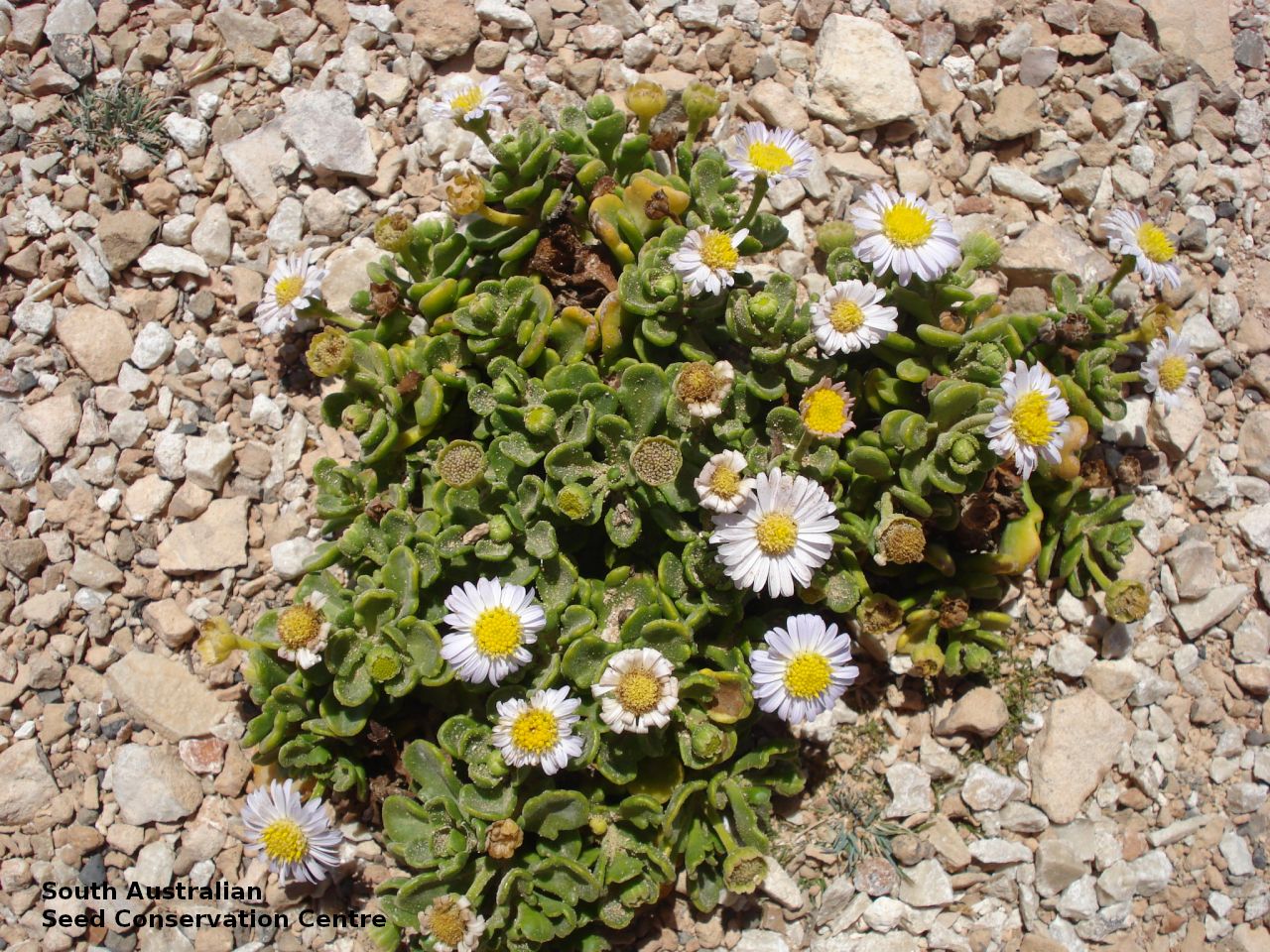
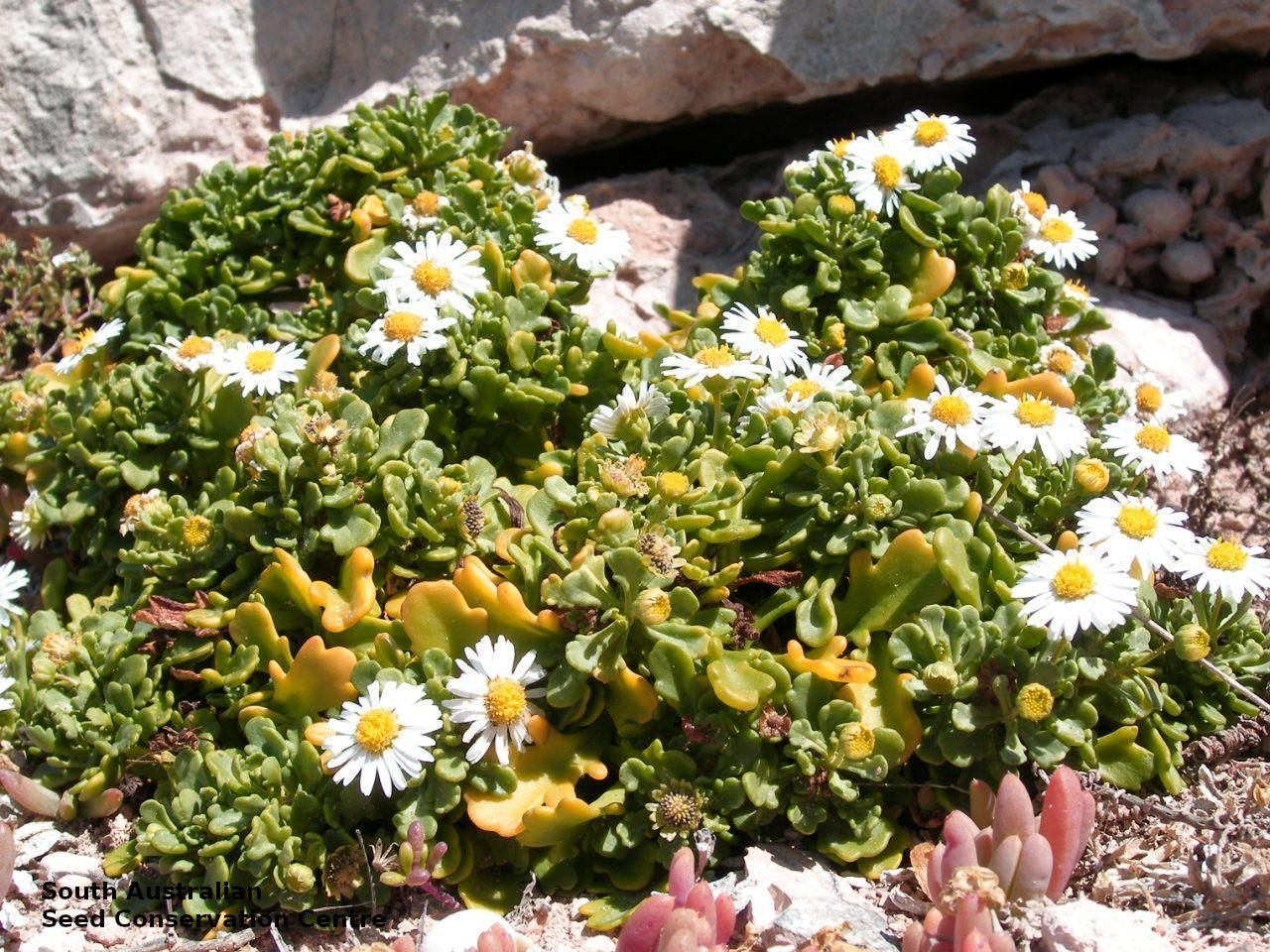
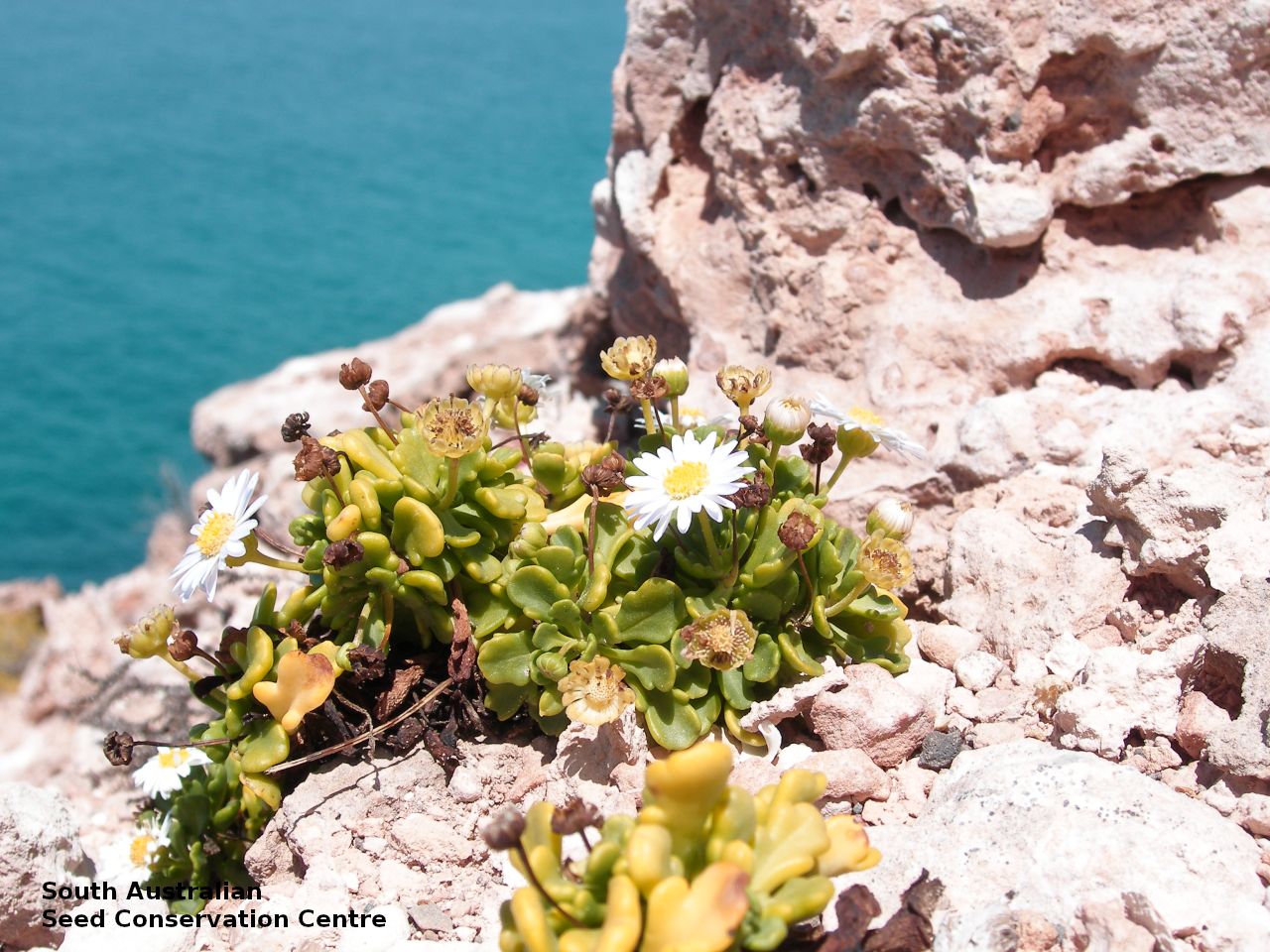
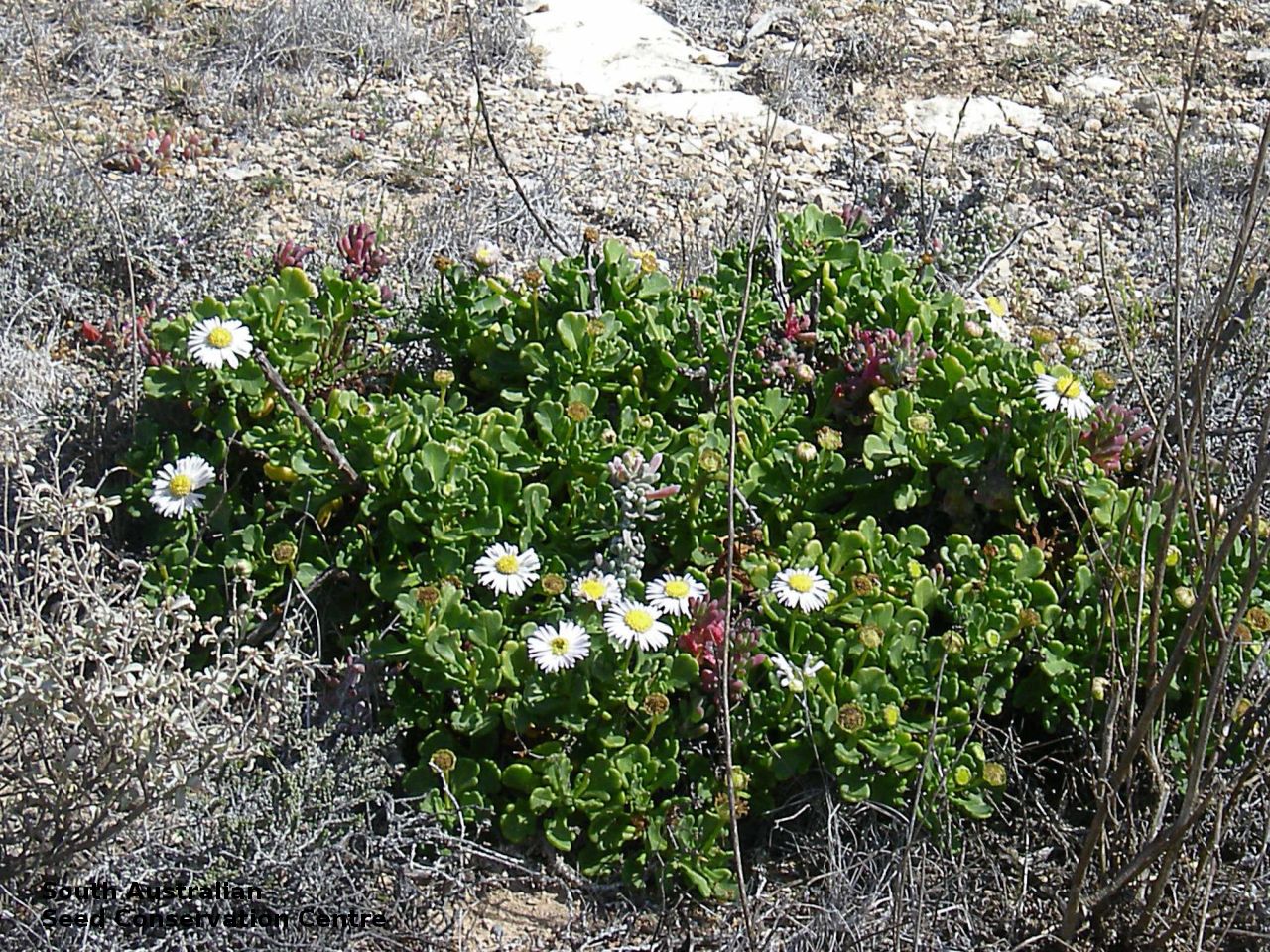
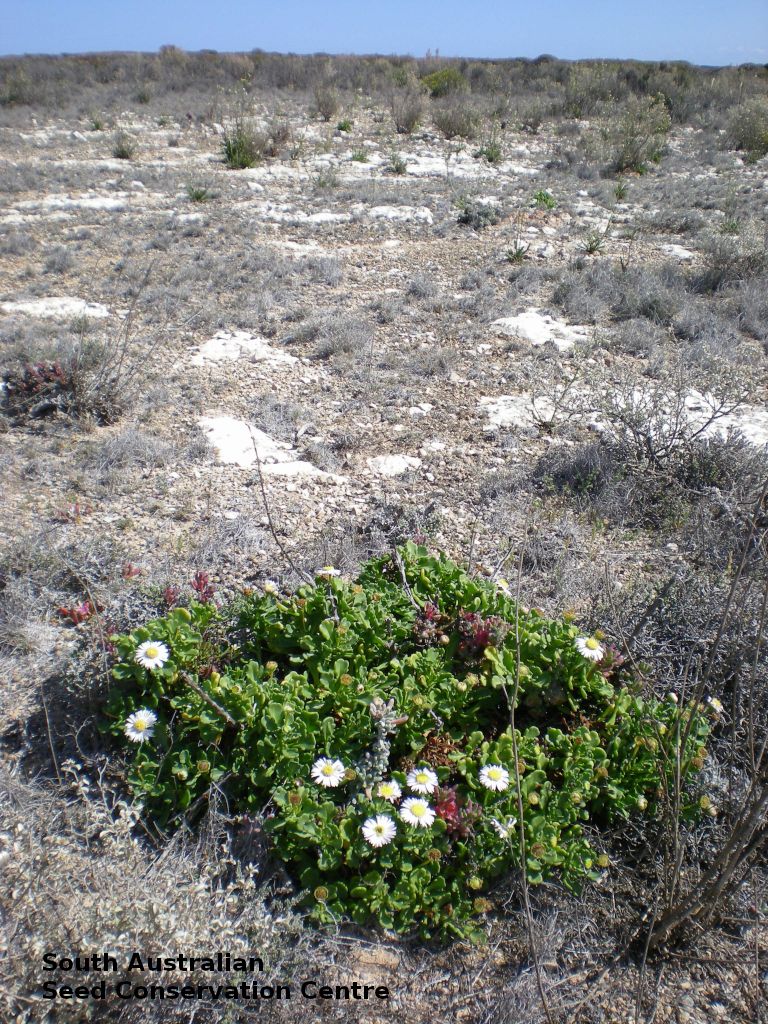
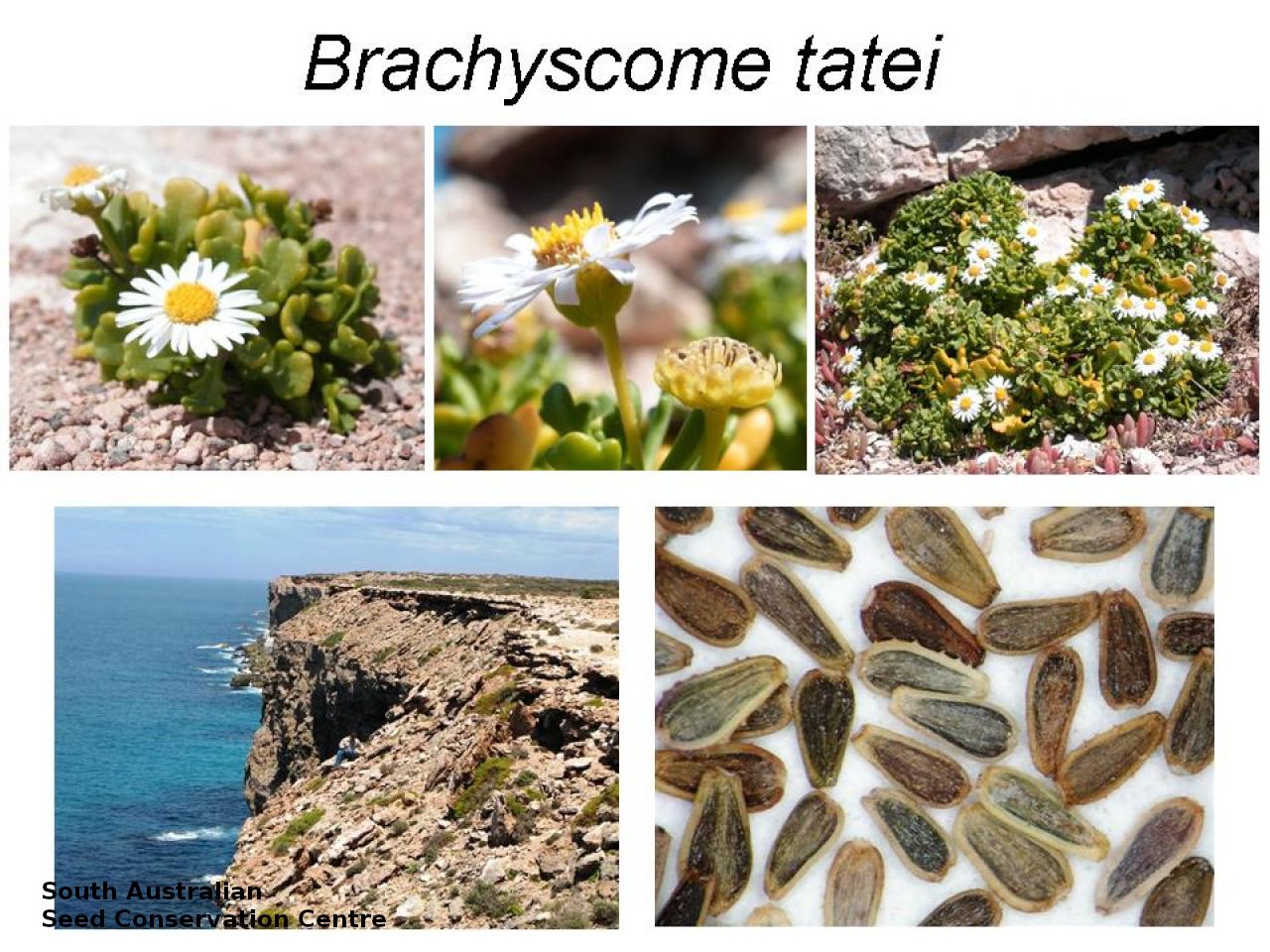
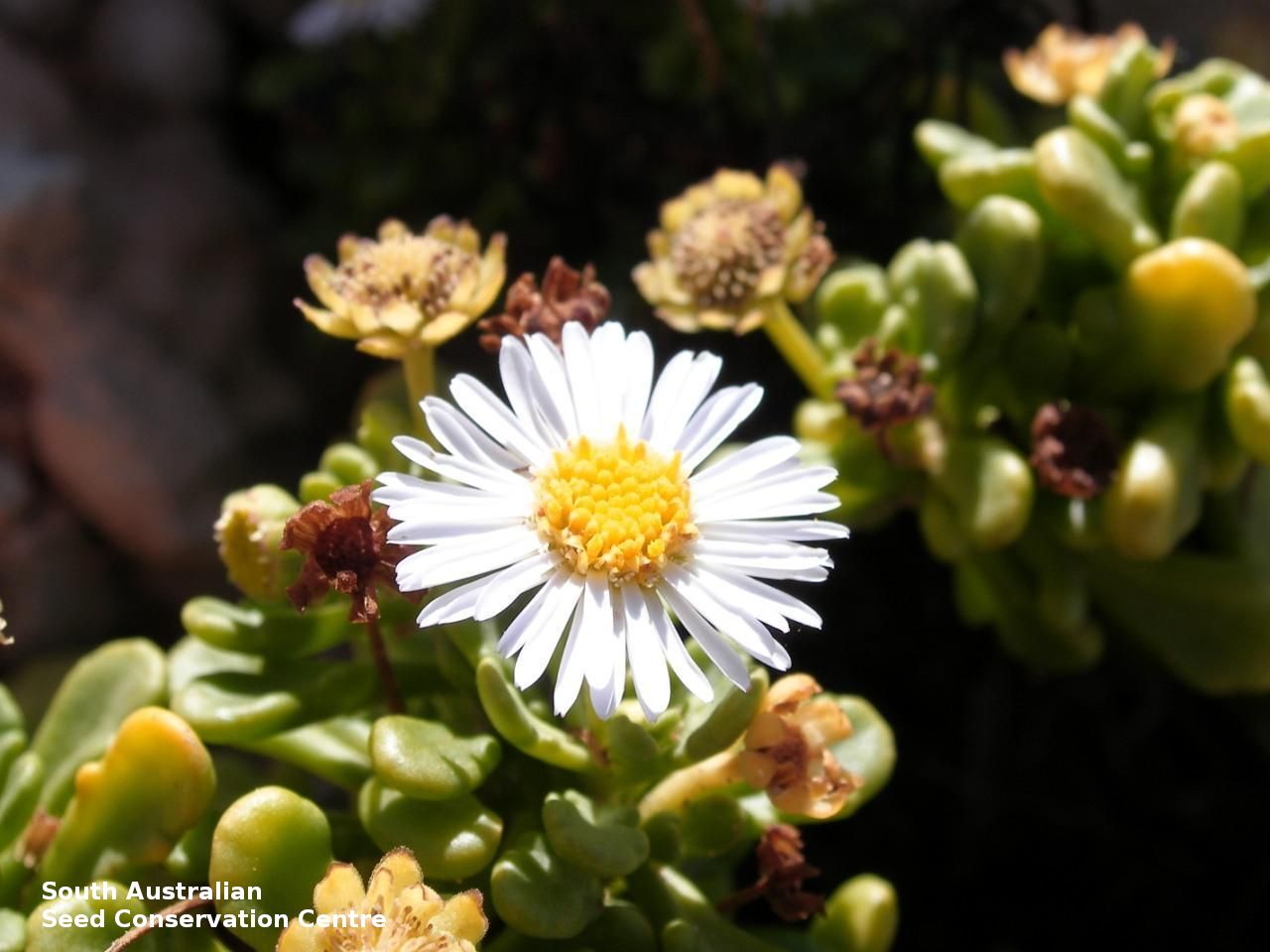
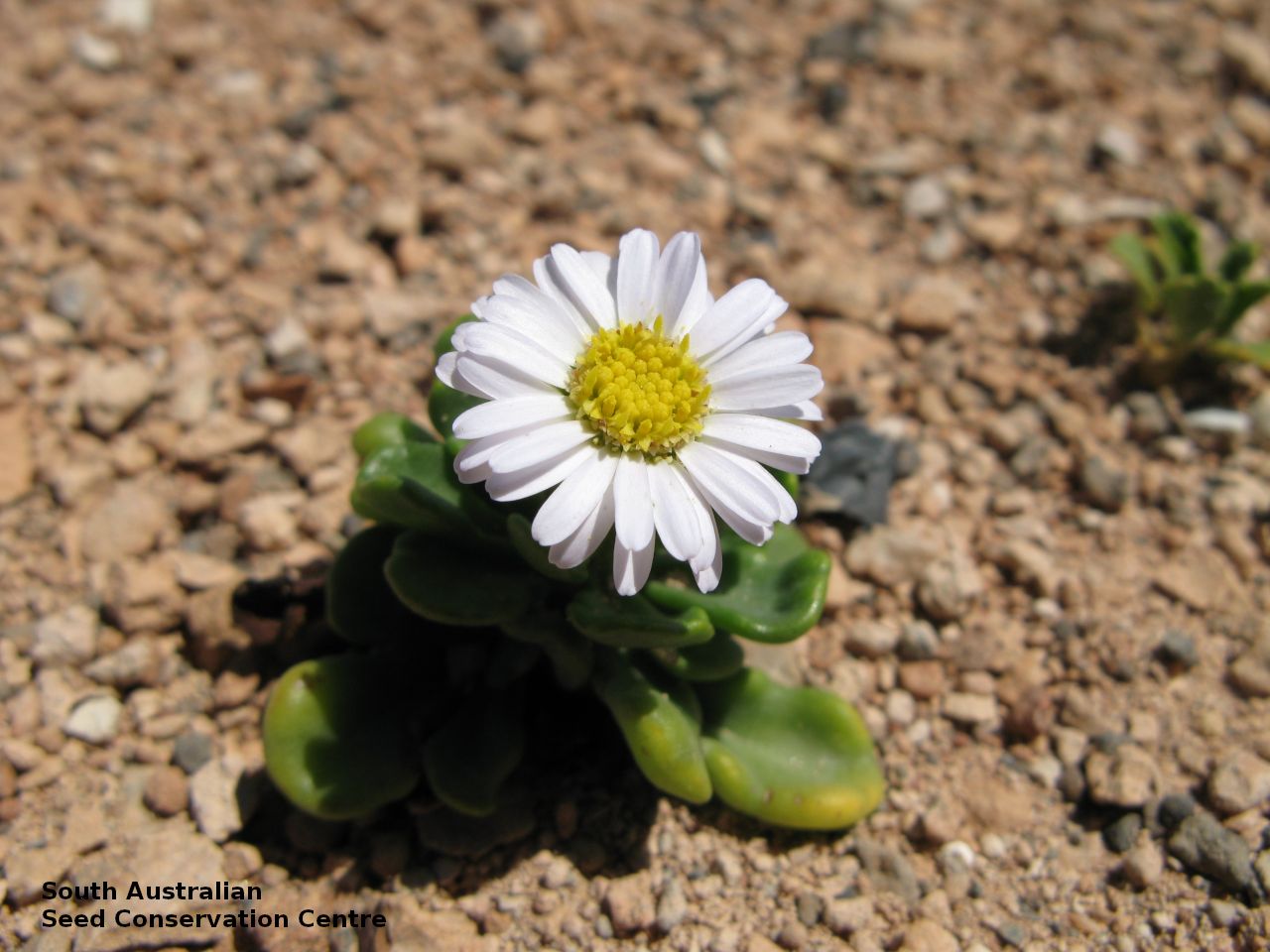
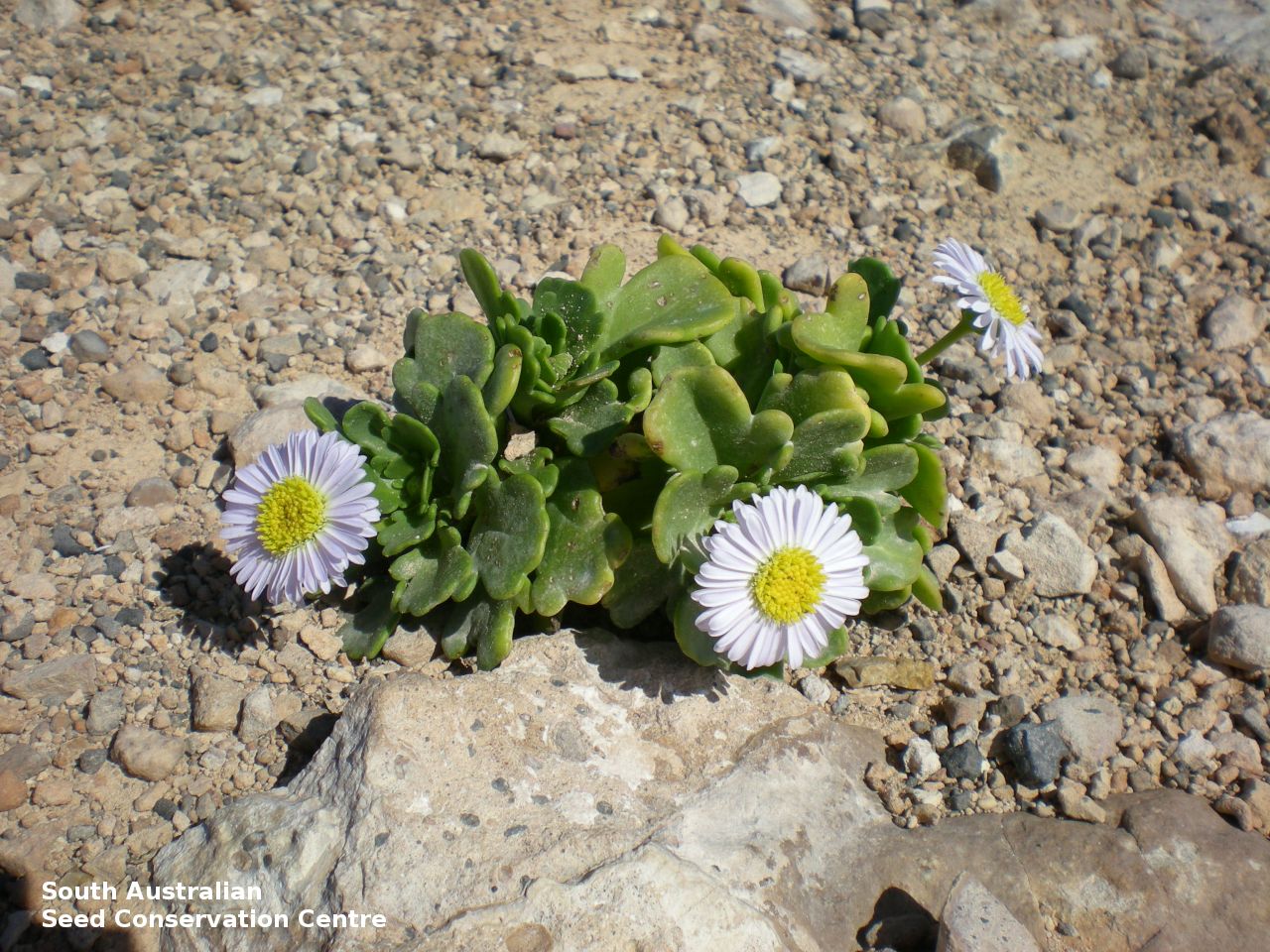
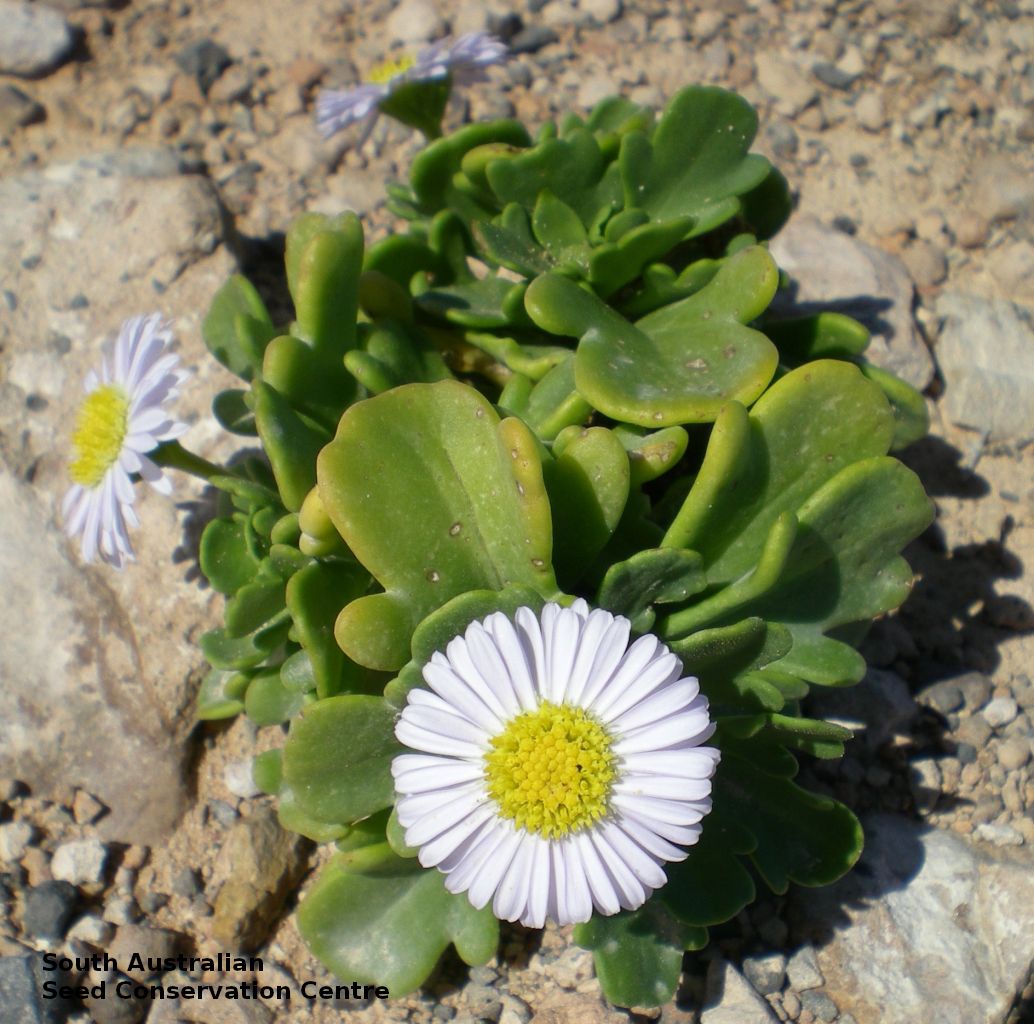
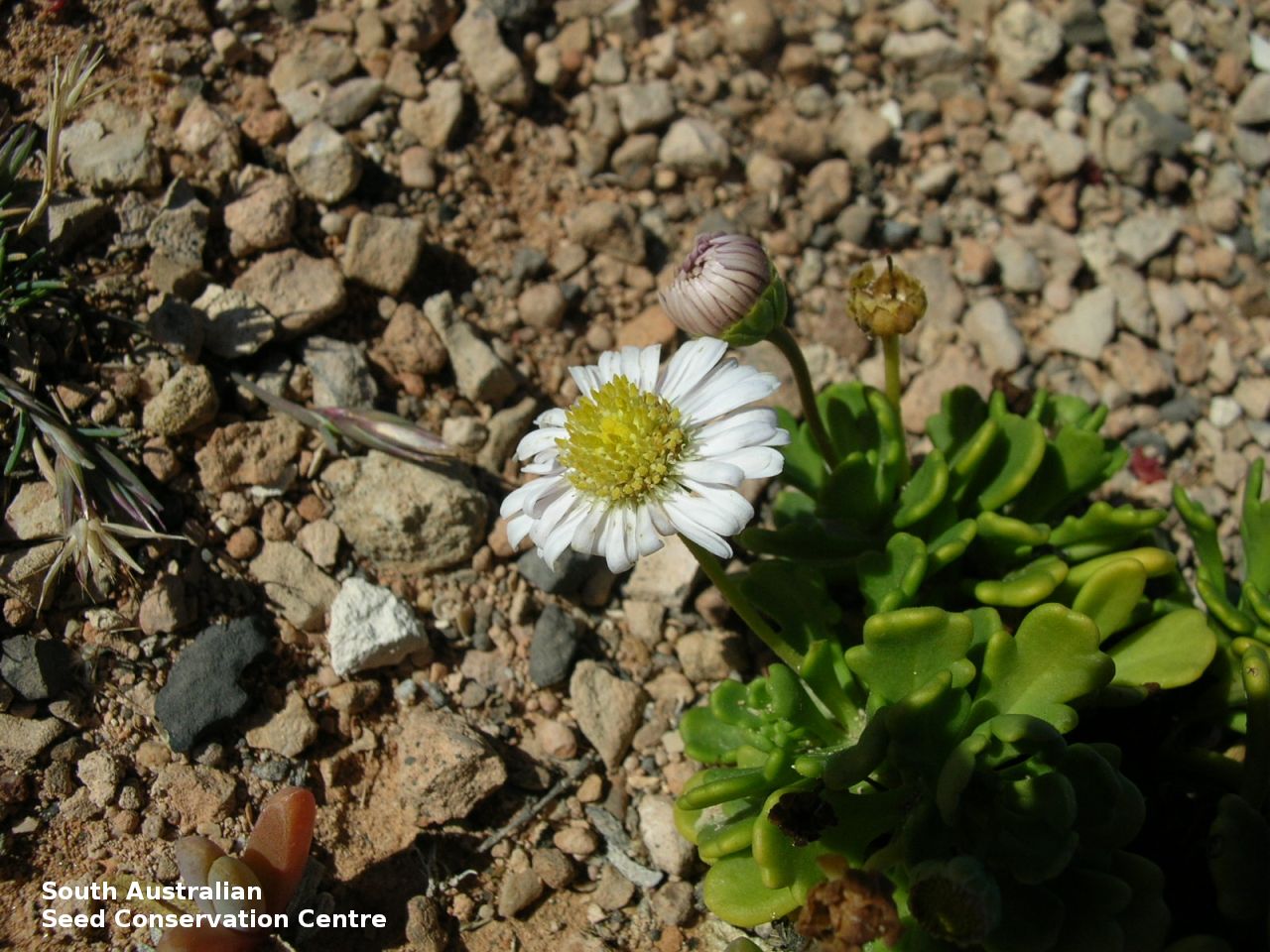
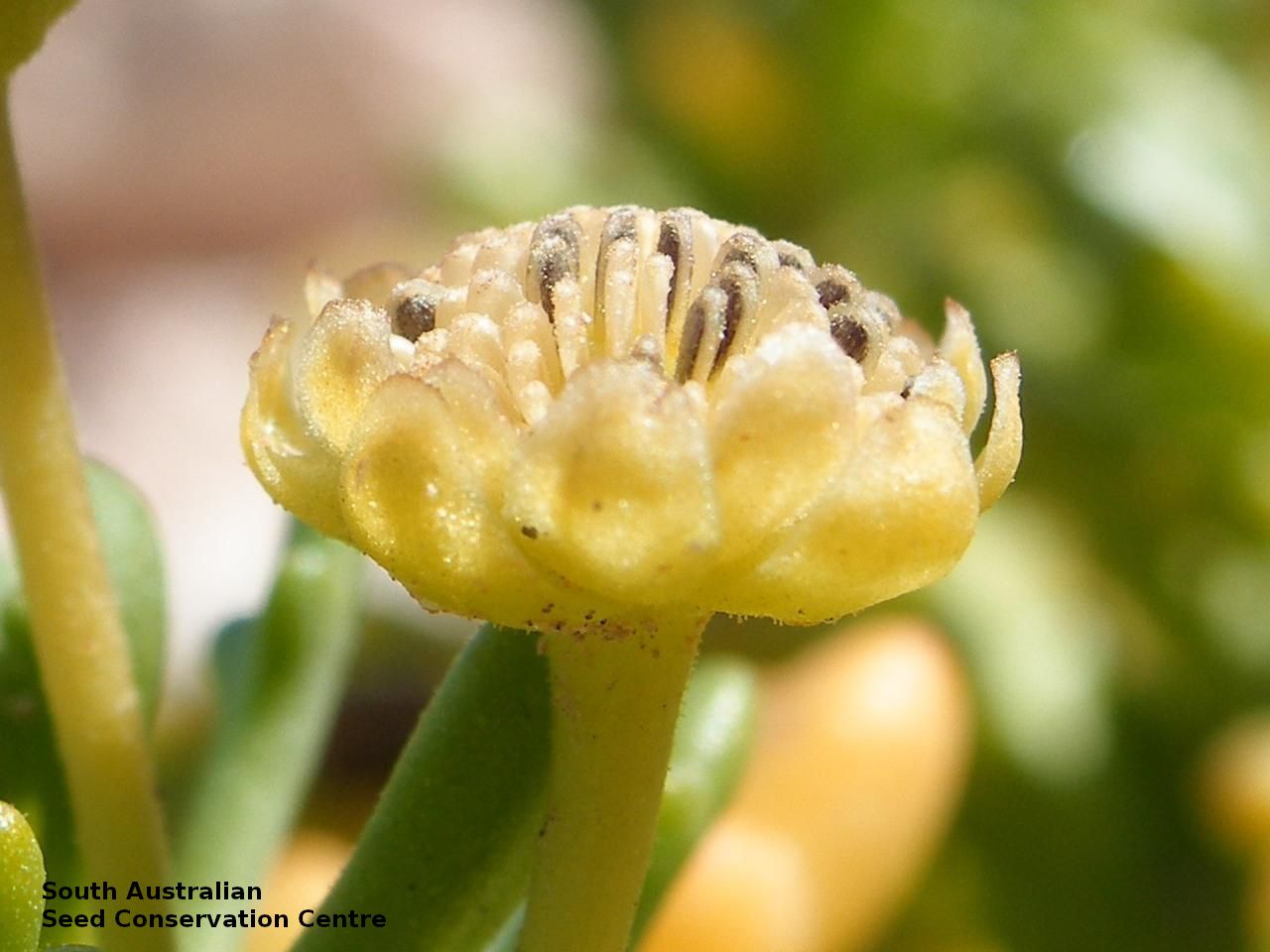
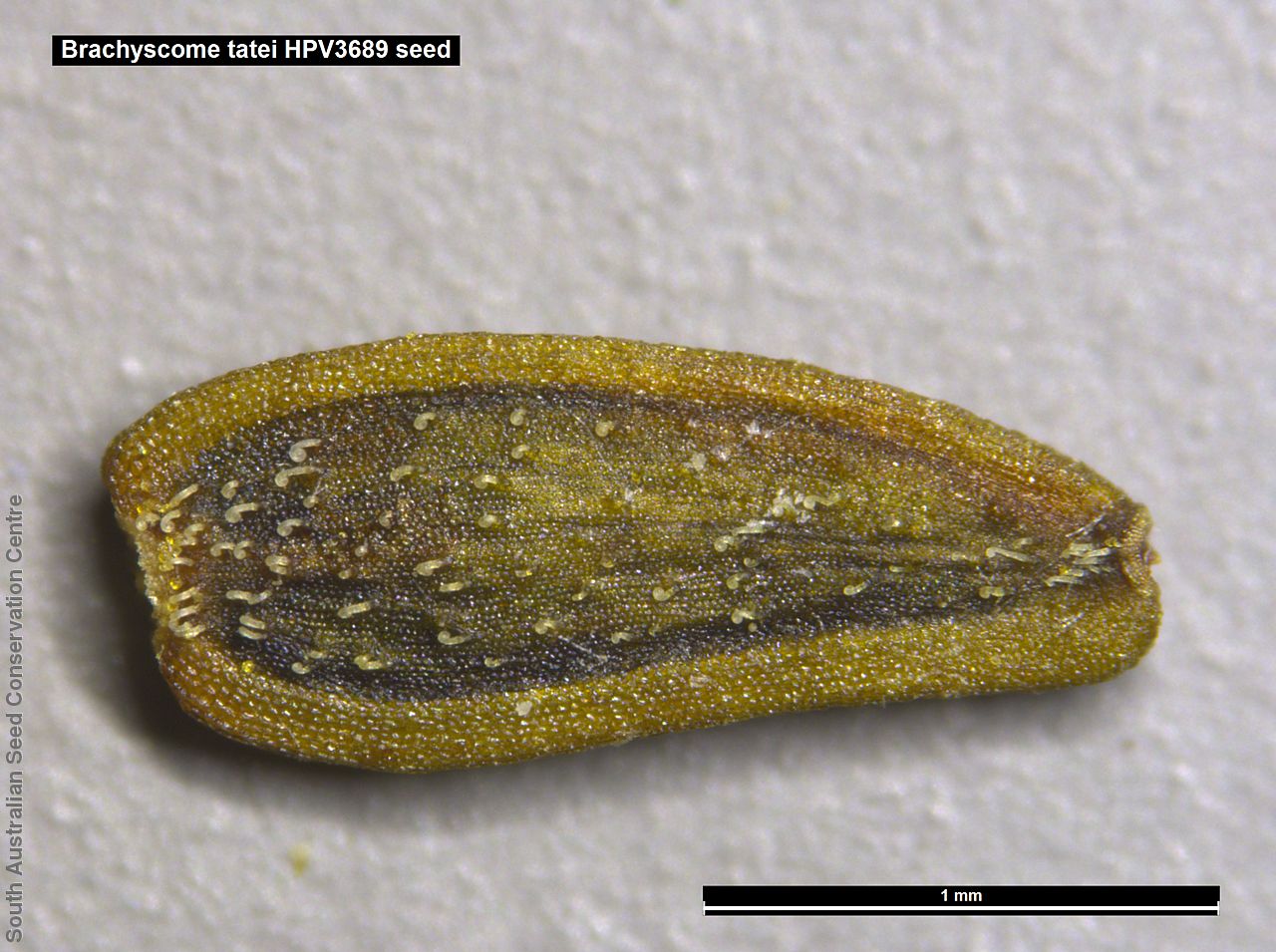
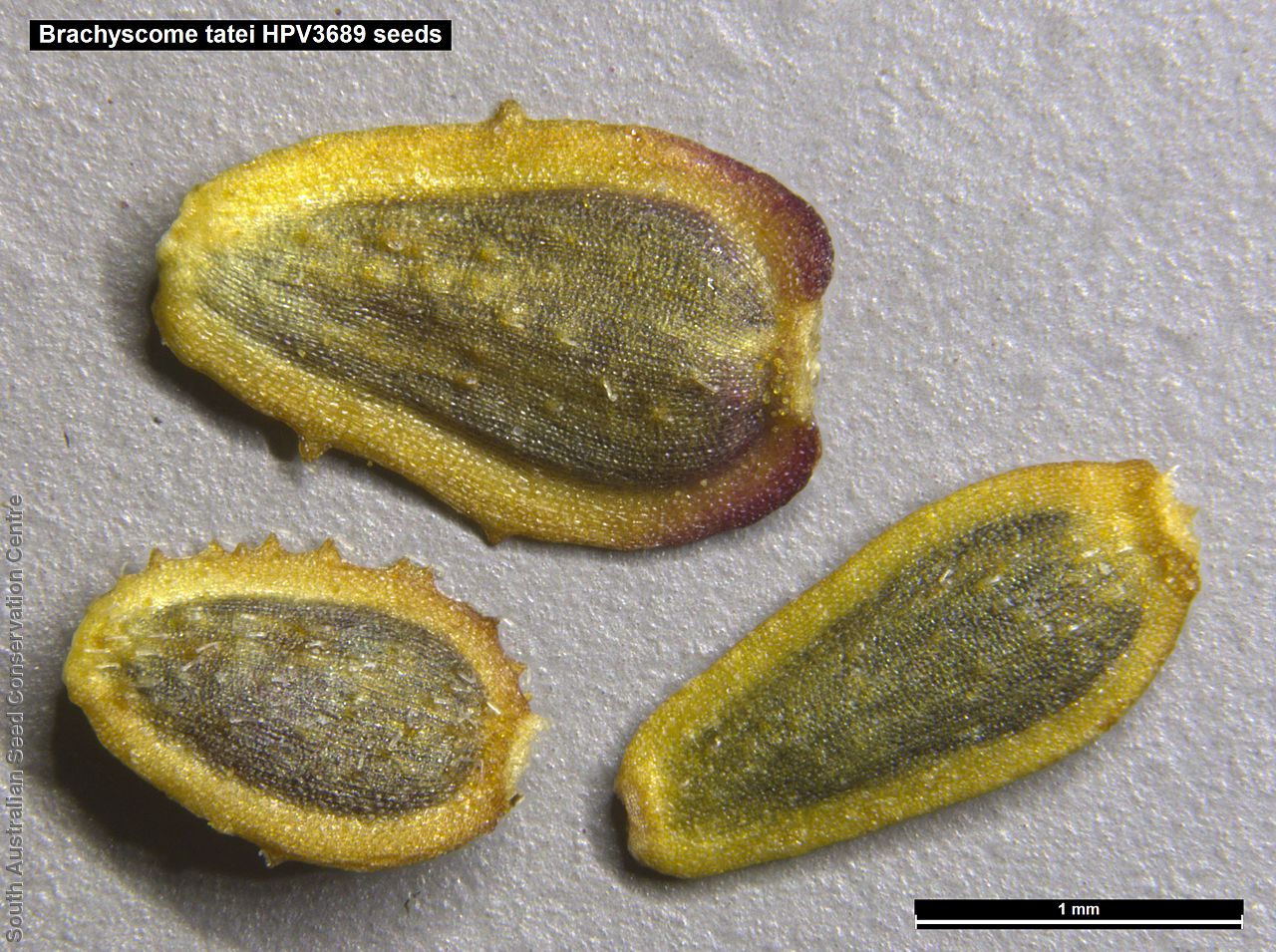

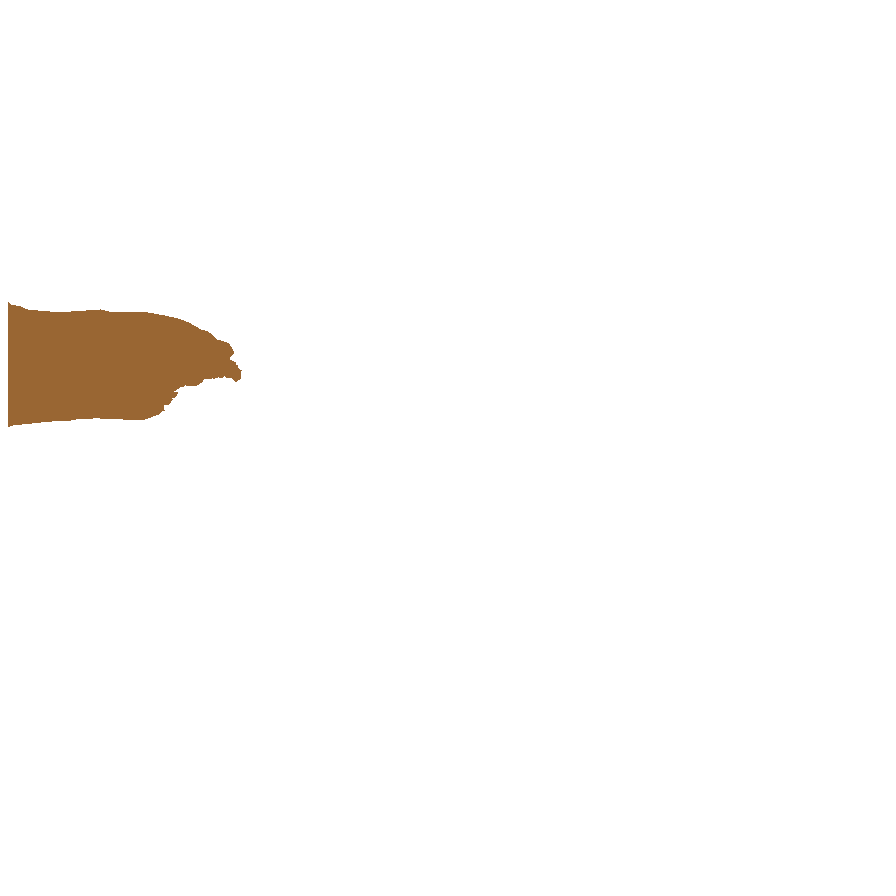
Botanical art
Prior names
Brachycome tatei
Common names
Nullarbor Daisy
Tate's Daisy
Etymology
Brachyscome from the Greek 'brachys' meaning short and 'kome' meaning hair, referring to the tuft of short bristles or hairs of the pappus. Tatei named after Ralph Tate (1840-1901), a geologist and the first Professor of Natural History at the University of Adelaide.
Distribution and status
Found along the the limestone cliffs of the Great Australian Bight from Fowler's bay in South Australia to Eucla in Western Australia. Native. Rare in South Australia. Rare in Western Australia.
Herbarium region: Nullarbor
NRM region: Alinytjara Wilurara
AVH map: SA distribution map (external link)
Plant description
A decumbent and branching perennial herb usually forming compact clumps with thick fleshy leaves. Flowers are white daisies displayed above the foliage. Flowering throughout the year. Fruits are brown daisy-head to 1 cm across containing numerous brown seeds. Seeds are flat ovoid brown seeds to 2 mm long and 1.3 mm wide, with few hairs and a serrated margin. Seed embryo type is spatulate fully developed.
Seed collection and propagation
Collect seeds between January and December. Pick heads that are maturing, drying off, with brown seeds that dislodge easily. Place the seed-heads in a tray and leave to dry for a week. Then gently rub the heads by hand to dislodge the seeds. Use a sieve to separate the unwanted material. Store the seeds with a desiccant such as dried silica beads or dry rice, in an air tight container in a cool and dry place. From one collection, the seed viability was high, at 95%. This species may have physiological dormancy that needs to be overcome for the seed to germinate.
| Location | No. of seeds (weight grams) | Number of plants | Date collected | Collection number Collection location | Date stored | % Viability | Storage temperature |
|---|---|---|---|---|---|---|---|
| BGA | 2,300 (0.53 g) | 5 | 9-Sep-2008 | HPV3689 Nullarbor | 1-Jun-2010 | 95% | +5°C, -18°C |
| BGA MSB | 3,600 (0.46 g) 2,200 (0.3 g) | 20-Dec-2007 | PJA166 Nullarbor | 1-Jan-2012 | 100% | -18°C |
Number of plants: This is the number of plants from which the seeds were collected.
Collection location: The Herbarium of South Australia's region name.
% Viability: Percentage of filled healthy seeds determined by a cut test or x-ray.